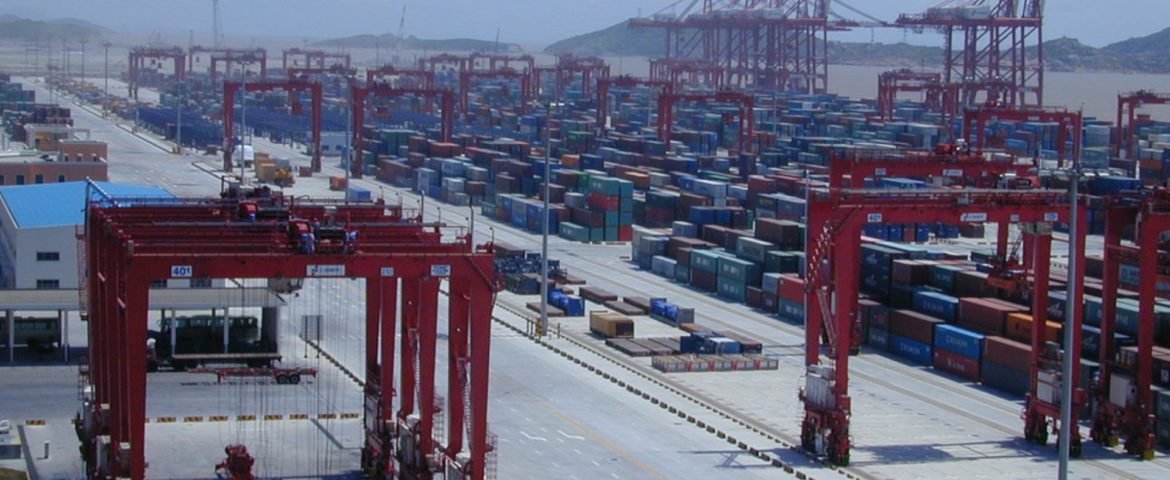Volatility and Uncertainty for carriers and retailers moving into the summer of 2022.
Since mid to late 2020, the freight market has seen extreme demand, and in many ways, there is still quite strong demand, but with inflation concerns, a potential reduction in consumer spending, and additional international supply chain disruptions, there are reports of cracks in the otherwise strong freight market.
Consumer spending is a major economic driver of freight volume, and with the increase in living expenses such as gas, food, and housing, there is less extra discretionary budget left for many Americans. Several retailers in recent earnings reports have highlighted this as they had lower than projected results. More Americans are spending less on what they don’t need, and spending more on essential items. This resulted, extremely quickly, in the increase in inventory levels for certain discretionary goods types.
Several freight indexes have noted a slight freight volume downturn depending on mode and freight type.
Nearly every company has also faced cost increases, whether labor or fuel-related. With diesel likely continuing to rise throughout the next two quarters, trucking prices and thus landed product prices could continue to increase. It’s possible this could drive up OTR freight prices, and push mode diversification to intermodal as a price hedge. That being said, intermodal is not without its own challenges such as limited rail capacity due to crew shortages and other operational planning choices that major rail carriers are currently making.
Many experts are at odds over what will happen next, with differing perspectives on whether the economy will remain at current levels, rise a bit, or further decline due to the issues already discussed. The reality is no one really can predict what will happen, which leaves retailers, trucking firms, and others within the supply industry trying to prepare for a potential increase in fuel cost, lower consumer spending, more supply chain issues in Shanghai, and further inflation.
The automotive industry is a bit different as new vehicle inventory is still a massive challenge for firms like GMC, Toyota, Ford, and Chevrolet, with many dealerships heavily relying on used car sales to maintain profit levels.
The current freight market is especially difficult to navigate for carriers on the front line to feel the effects of higher diesel prices. They are faced with the choice of how to price their services, which will vary depending on the contract, spot, or dedicated service type, then lane choice will also have a pricing impact. Freight volumes on both truck and train have dropped anywhere from 2-5% depending on model and reference from this time last year, yet intermodal volume at least in the short term is actually up a bit. More intermodal is contracted vs trucking, but also retailers could be in less of a rush to move product and so are choosing to let the inventory sit on slightly slower-moving trains.
In short, the freight market is a bit more unsteady than in the last two years, but rates are not anywhere near as low as they were in 2019, which was considered a “freight recession”. Will there be a new freight recession? Who knows, consumer spending will reign supreme in setting demand levels for new goods and thus transportation.
Many economists point to the freight market as a leading indicator of overall economic health and strength, and right now, just like with the overall economy, supply chain demand is a mixed bag.
What do we expect?
Volumes would have to drop quite a bit for shippers to feel pricing drops from their logistics partners due to the rising fuel costs. If fuel/oil prices are able to be controlled, then it’s likely later this year trucking and rail prices could drop somewhat, but freight volume will be the major determinant going into peak season.
Building up inventory, especially essential items would be a valid market interpretation, as many retailers have had record low inventory levels until the last couple of months. Keeping enough inventory available in case of additional covid-related supply chain disruptions, particularly in China, should be a prime objective for many importers, as additional shipments are still being delayed. It is good news that the strict lockdown in Shanghai seems to be slowly lifting which should hopefully promote imports to move more smoothly. That being said inventory from major retailers like Walmart, Target and others has risen quickly in recent reports.
Freight capacity will likely remain relatively constricted; with ocean drayage, in particular, stretched thin vs current demand. It’s more likely that certain regions/lanes for FTL domestic freight will be the first to drop in freight volume moved/ demand.
In closing, the current freight market is very industry and niche specific. Depending upon the niche you are in you could want to continue building inventory levels and make long-term trucking contracts. As usual, we suggest a mix of freight modes, a balance between short and long-term contracts, and spot market capacity. This should minimize pricing increase risks while giving you the capacity you need to keep moving your products.
Intermodal should also be a consideration, in the current market intermodal represents a substantial cost savings in many lanes, diversification to a different source of capacity that is less volatile, and its slightly slower transit time can be helpful with goods that aren’t immediately needed.



